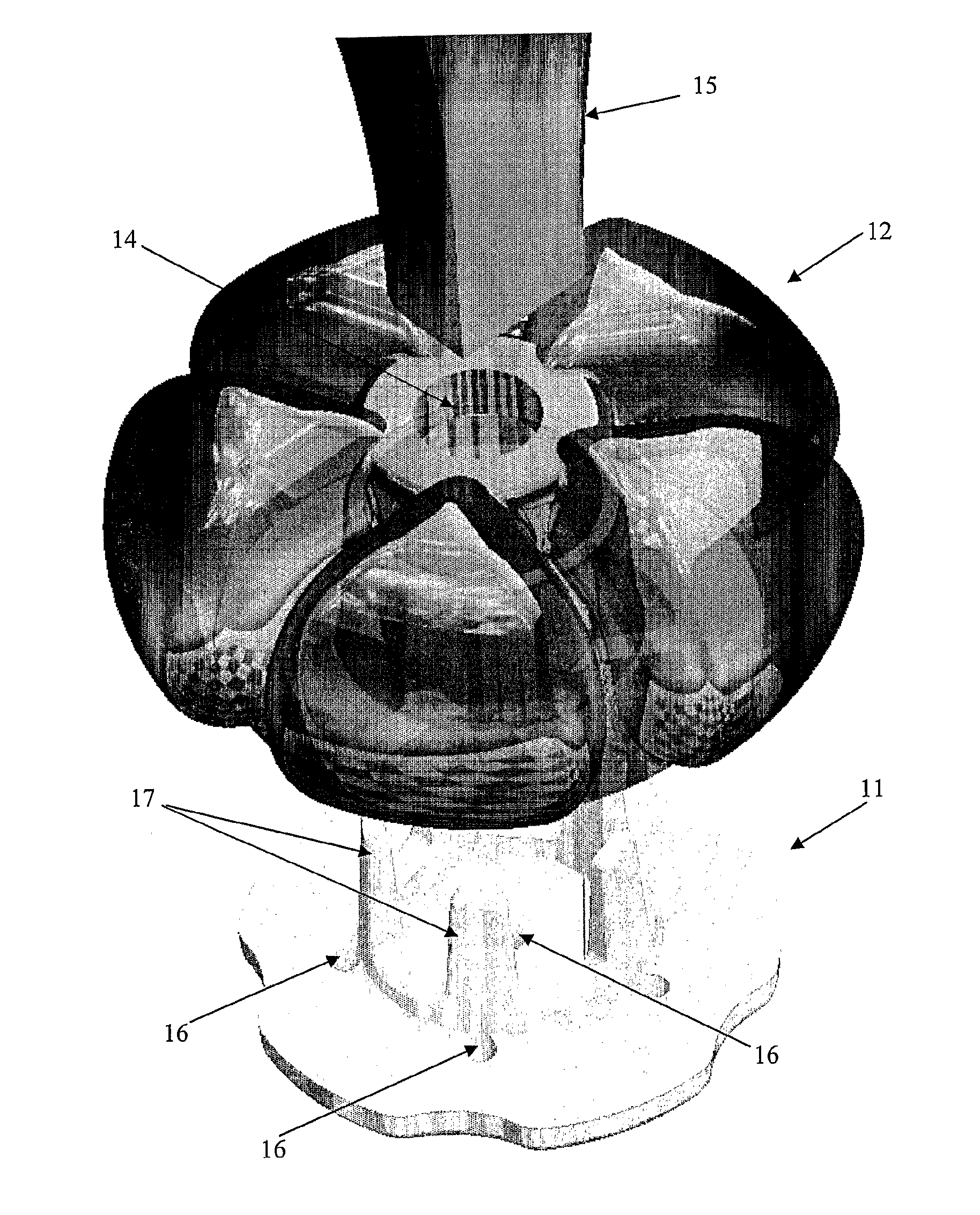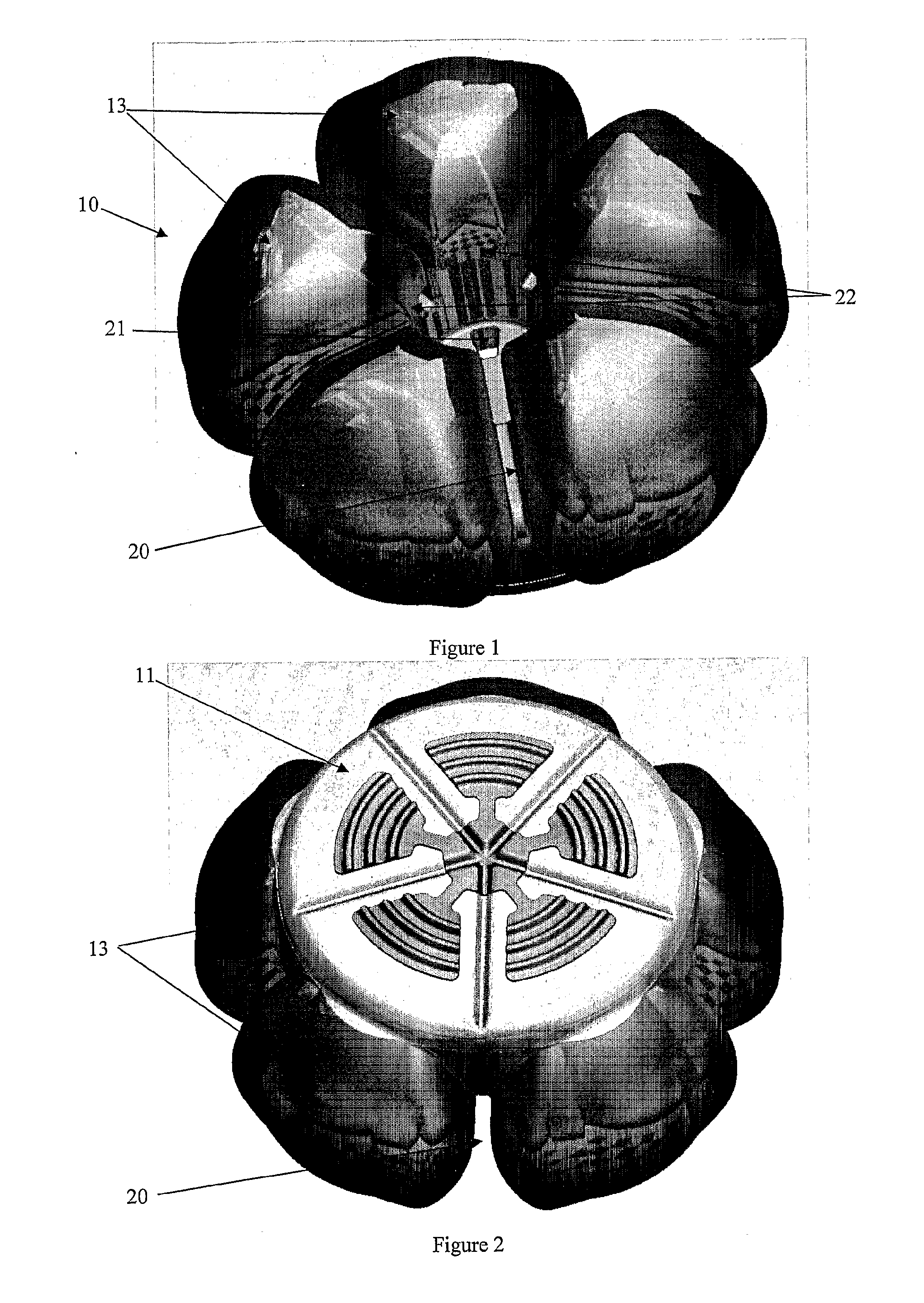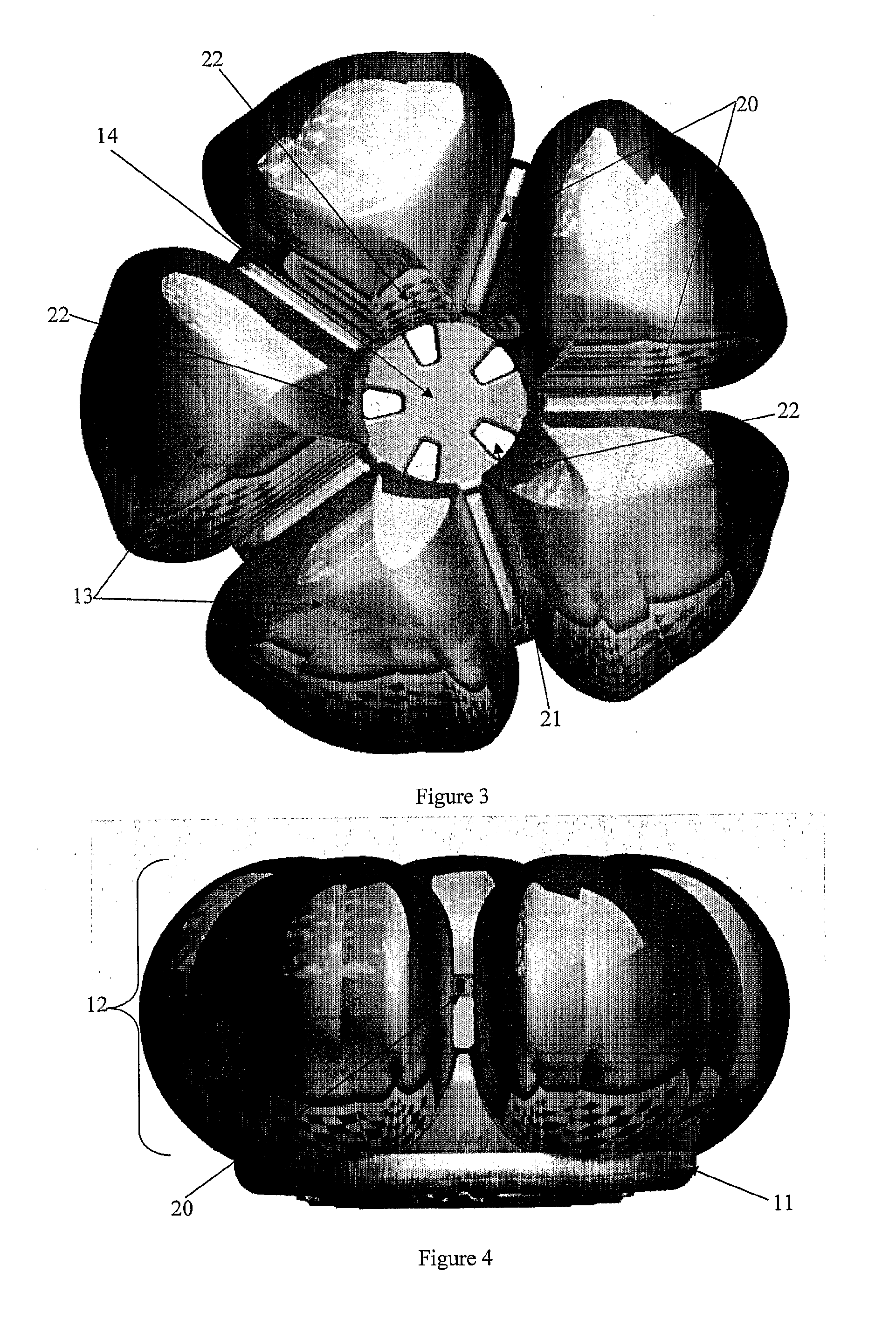Shoe Heel Support Device
a technology for supporting devices and shoes, which is applied in the direction of fastenings, shoes, clothing, etc., can solve the problems of narrow stein structure of the heel sinking in between, the heel sinking into the ground being walked upon, and the difficulty of walking on such a surface, so as to reduce the height of the device, improve aesthetics, and leave more of the heel uncovered
- Summary
- Abstract
- Description
- Claims
- Application Information
AI Technical Summary
Benefits of technology
Problems solved by technology
Method used
Image
Examples
Embodiment Construction
[0043]According to a particularly preferred embodiment, a shoe heel support device is provided. In the illustrated embodiments, the same reference numbers are used to refer to the same component parts in FIGS. 1-11, but the reference numbers are not in conformity in FIG. 12.
[0044]Referring to the drawings, particularly FIGS. 1-4, the embodiment of the shoe heel support device has a substantially unitary configuration when assembled but has a pair of components as illustrated in FIG. 5.
[0045]The shoe heel support 10 illustrated the figures includes a ground contacting base 11 and a resilient shoe heel engagement portion 12 attached to the ground contacting base 11. The resilient shoe heel engagement portion of the illustrated embodiment includes five lobe portions 13 each having an inner surface which together define a bore 14 for receiving a shoe heel 15 therein in an interference fit 19 as illustrated in FIG. 7.
[0046]As illustrated in the Figures, the device 10 has a generally toro...
PUM
 Login to View More
Login to View More Abstract
Description
Claims
Application Information
 Login to View More
Login to View More - R&D
- Intellectual Property
- Life Sciences
- Materials
- Tech Scout
- Unparalleled Data Quality
- Higher Quality Content
- 60% Fewer Hallucinations
Browse by: Latest US Patents, China's latest patents, Technical Efficacy Thesaurus, Application Domain, Technology Topic, Popular Technical Reports.
© 2025 PatSnap. All rights reserved.Legal|Privacy policy|Modern Slavery Act Transparency Statement|Sitemap|About US| Contact US: help@patsnap.com



